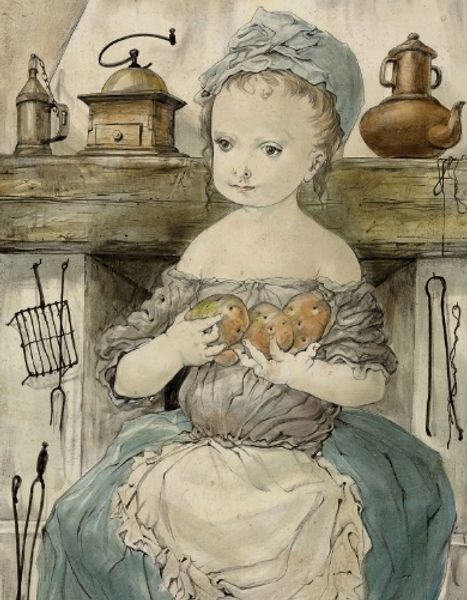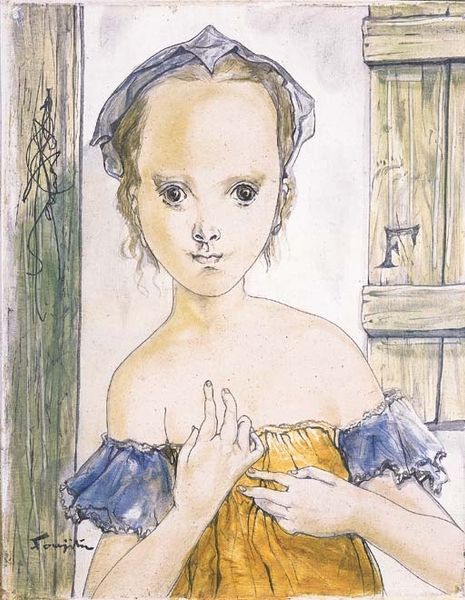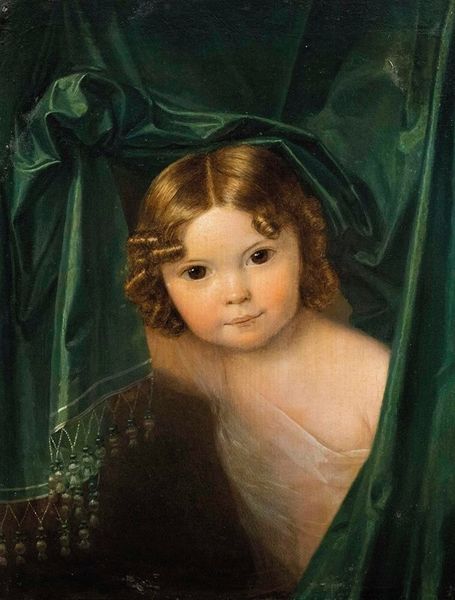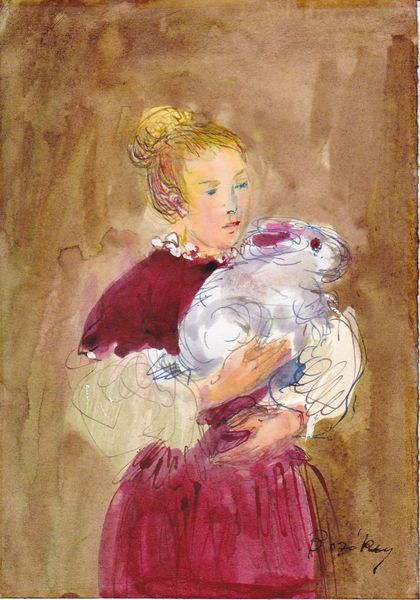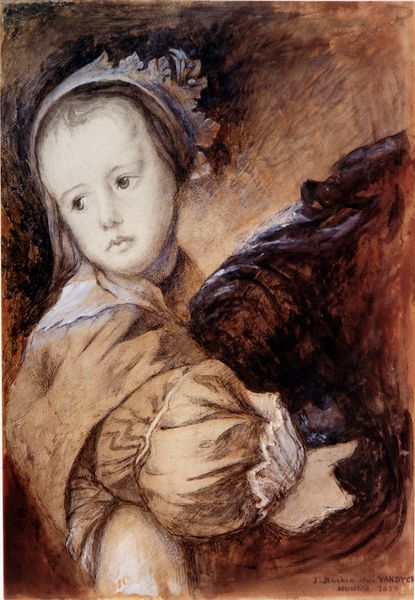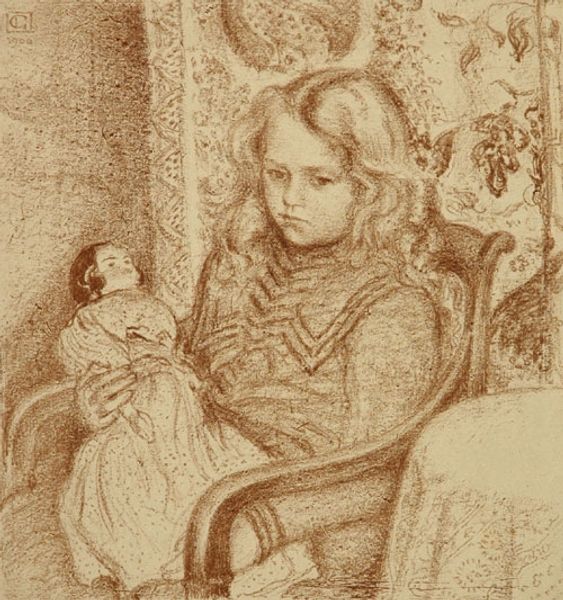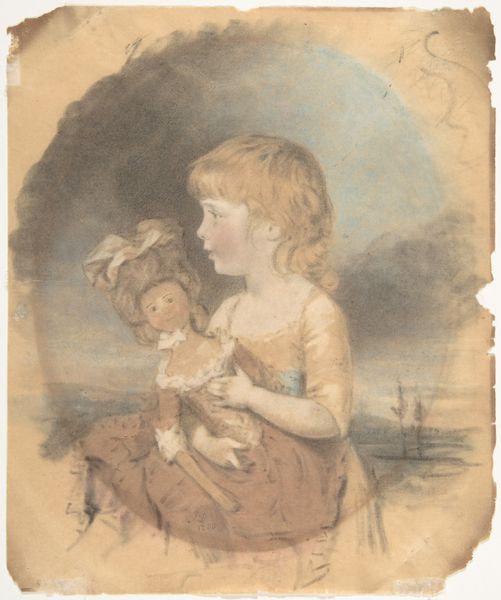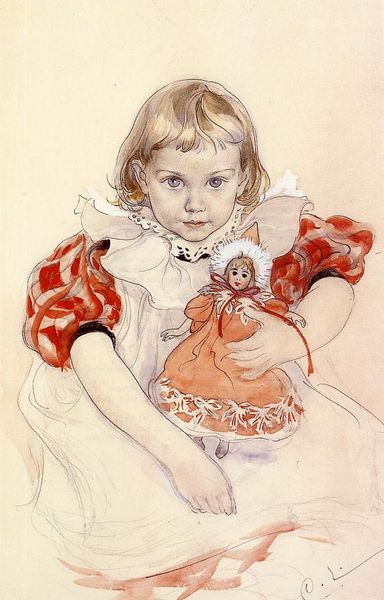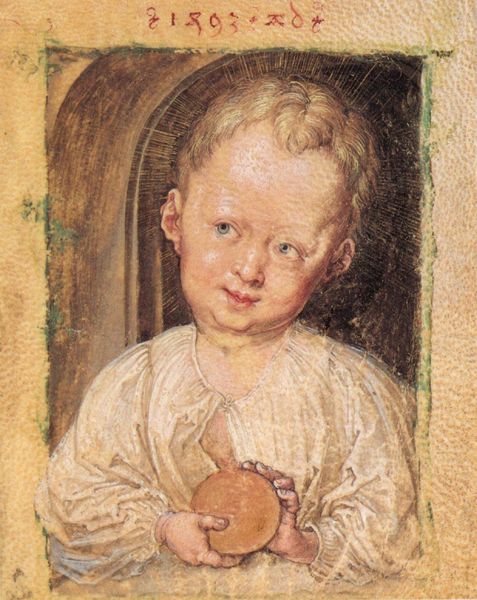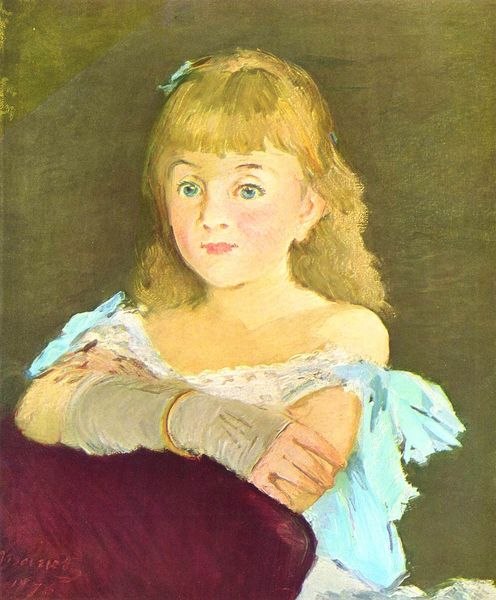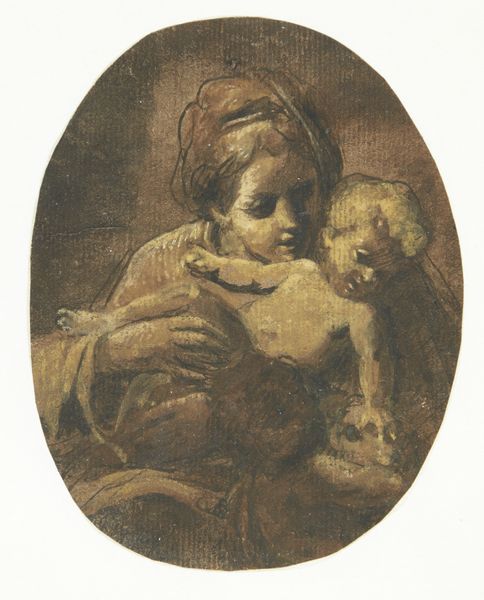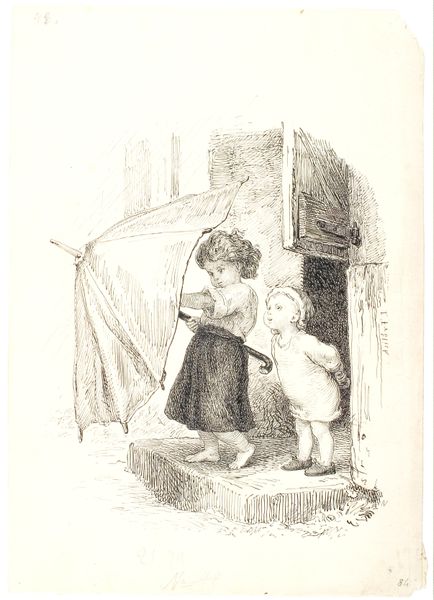
Copyright: Tsuguharu Foujita,Fair Use
Editor: This is "Fillette à la poupée japonaise," painted by Tsuguharu Foujita in 1949. The medium appears to be paint. I’m immediately drawn to the contrast between the almost photorealistic rendering of the girl’s face and hair versus the doll’s simplified features. How do you interpret this work? Curator: The visual strategy employed by Foujita relies heavily on line and the tonal modelling to define form. Notice the subtle gradations that render the girl's complexion, achieving a porcelain-like effect. Contrast this with the stark, almost graphic, representation of the Japanese doll. Do you observe how this juxtaposition impacts your understanding? Editor: I do. The doll seems to flatten the image, as opposed to creating the depth the girl suggests. It’s as if they exist in different dimensions. Curator: Precisely. The interplay of textures is significant. Consider the treatment of the girl's hair—detailed and flowing—against the relatively flat planes that construct the doll’s form. Furthermore, examine the compositional choices—the off-center placement, the soft color palette. How does that frame of the artwork itself speak to the composition of what is displayed inside of it? Editor: Interesting point. The simple frame adds to the doll’s simplicity and helps balance it. What have I learned today? Curator: Yes, you learned how an examination of contrasting artistic styles and their visual effects can lead to deeper interpretive understanding. What strikes me about your examination of the piece is the interplay of art styles creating tension through conflicting elements within the piece.
Comments
No comments
Be the first to comment and join the conversation on the ultimate creative platform.

